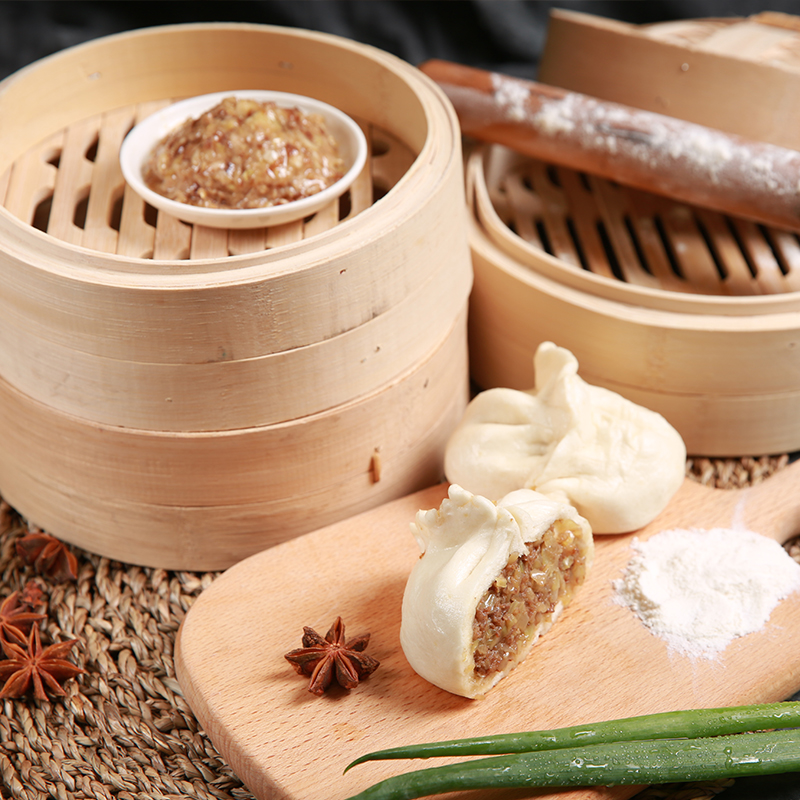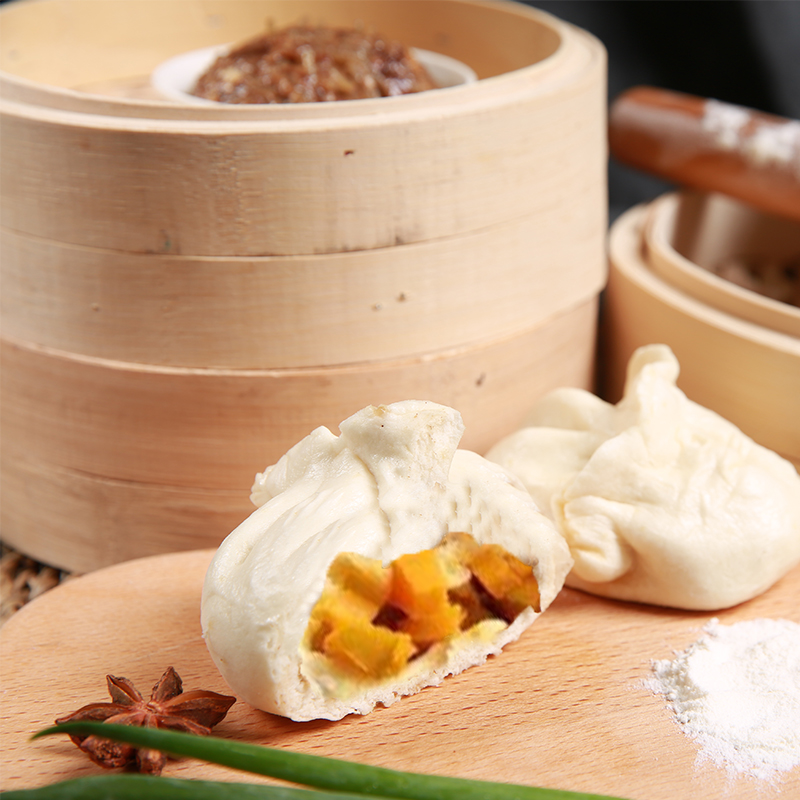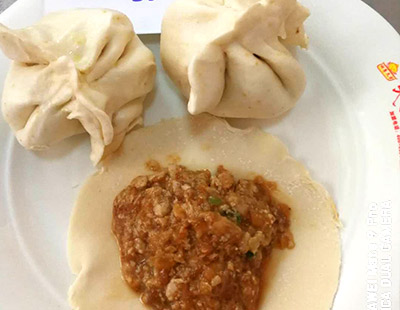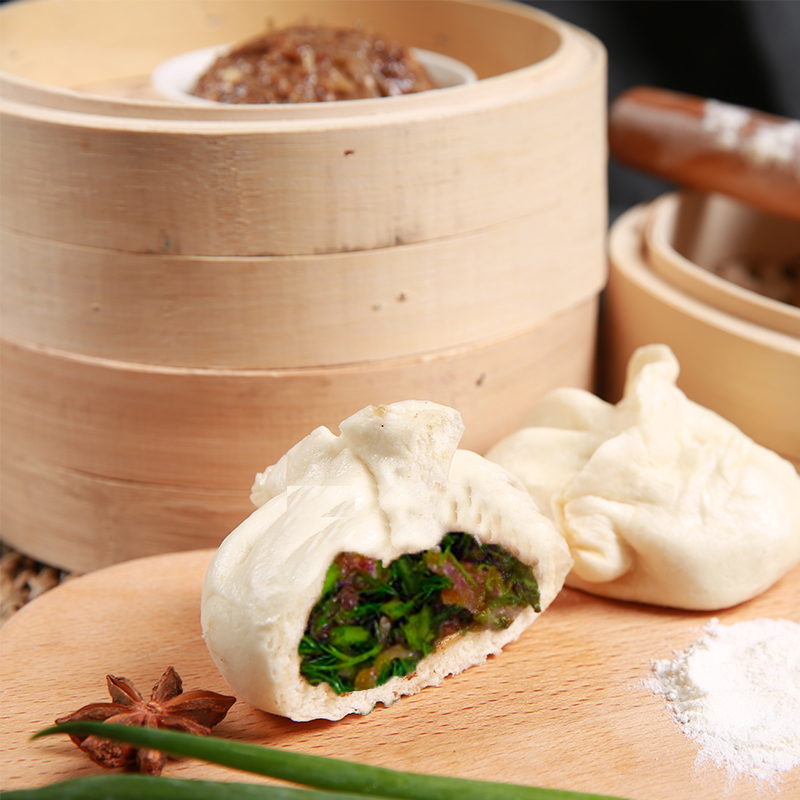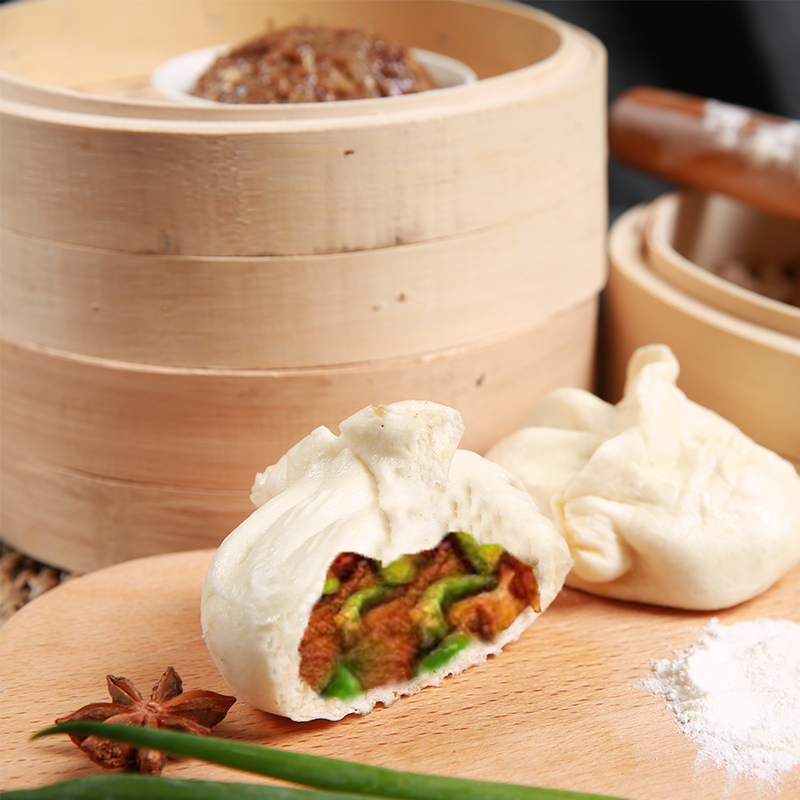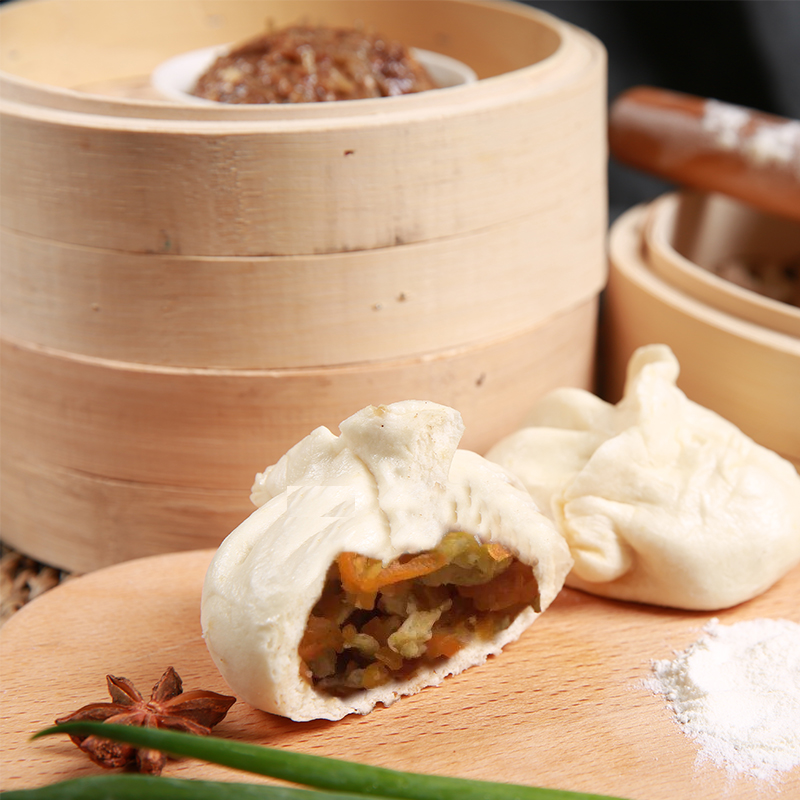一、加水量和加水溫度
1、 Amount and temperature of water added
1、加水量
1. Amount of water added
面粉面筋蛋白質(zhì)含量不同,和面時(shí)的加水量是不一樣的。面筋蛋白質(zhì)含量高要多加水,面筋蛋白質(zhì)含量低就少加水,原則就是讓包子面團(tuán)盡量軟和點(diǎn)。蒸包子加水量為面粉重量的55%~60%左右。
Flour gluten protein content is different, and the amount of water is not the same. High gluten protein content should add more water, low gluten protein content should add less water, the principle is to make the steamed bun dough as soft as possible. The amount of water added to steamed bun is about 55% ~ 60% of the weight of flour.
2、加水溫度
2. Water temperature
由于在30℃溫度時(shí),面筋蛋白質(zhì)吸水多,因此,在和面時(shí),要想辦法使面團(tuán)的溫度保持在30℃左右。
As the gluten protein absorbs more water at 30 ℃, we should try to keep the dough temperature at about 30 ℃ when mixing.
在天氣冷的時(shí)候,你應(yīng)該用溫水和面;在天氣熱的時(shí)候,你可以用冷水和面。
When the weather is cold, you should use warm water and noodles; In hot weather, you can mix noodles with cold water.
特別提示:
Special tips:
在天氣冷的時(shí)候,你可以多加點(diǎn)水;在天氣熱的時(shí)候,你可以少加點(diǎn)水。
When it's cold, you can add more water; When it's hot, you can add less water.
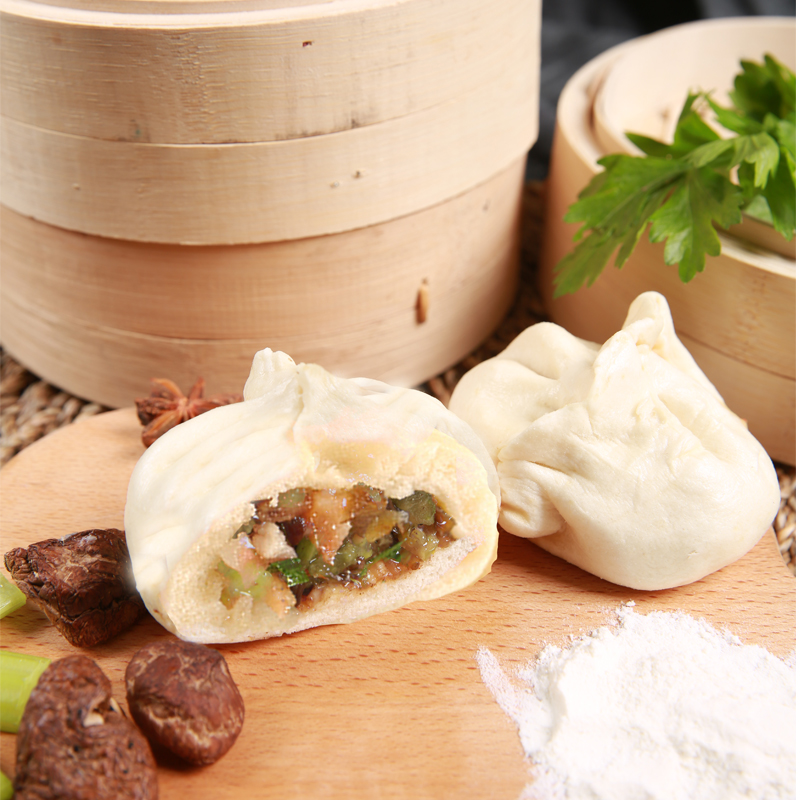
二、使用的膨松劑
2、 Used bulking agent
蒸包子,你可以用化學(xué)膨松劑如無鋁泡打粉,又可以用生物膨松劑如高活性干酵母或者老面,你還可以兩個(gè)都用。如果你想快,包子大又白,就用無鋁泡打粉蒸包子;如果你想好吃,就用高活性干酵母或者老面蒸包子;如果你想又快又好吃,那就同時(shí)使用吧!
For steamed buns, you can use chemical leavening agents such as aluminum free baking powder, or biological leavening agents such as high activity dry yeast or old noodles. You can also use both. If you want to be quick and the steamed buns are big and white, steam them with aluminum free baking powder; If you want to taste good, use high activity dry yeast or steamed bun with old noodles; If you want to be quick and delicious, use it at the same time!
用無鋁泡打粉蒸包子,使用量為面粉重量的1%~1.4%左右;用高活性干酵母蒸包子,使用量為面粉重量的0.6%~1.2%左右;如果兩個(gè)都用,每個(gè)的使用量要適量減少。
Steamed buns were steamed with aluminum free baking powder, and the amount of steamed buns was about 1% ~ 1.4% of the weight of flour; Steamed buns were steamed with high active dry yeast, and the amount of steamed buns was about 0.6% ~ 1.2% of the weight of flour; If you use both, use less of each.

